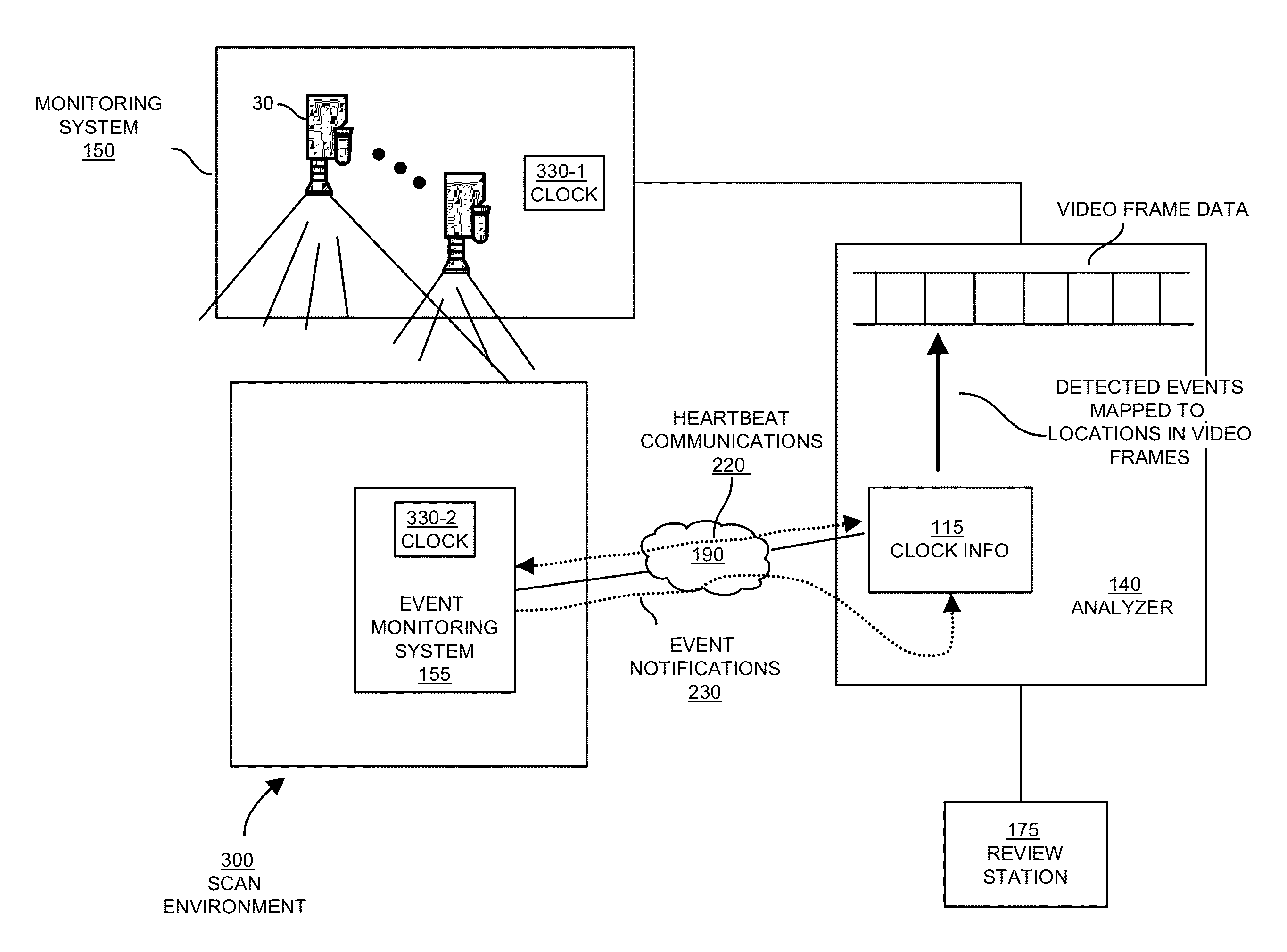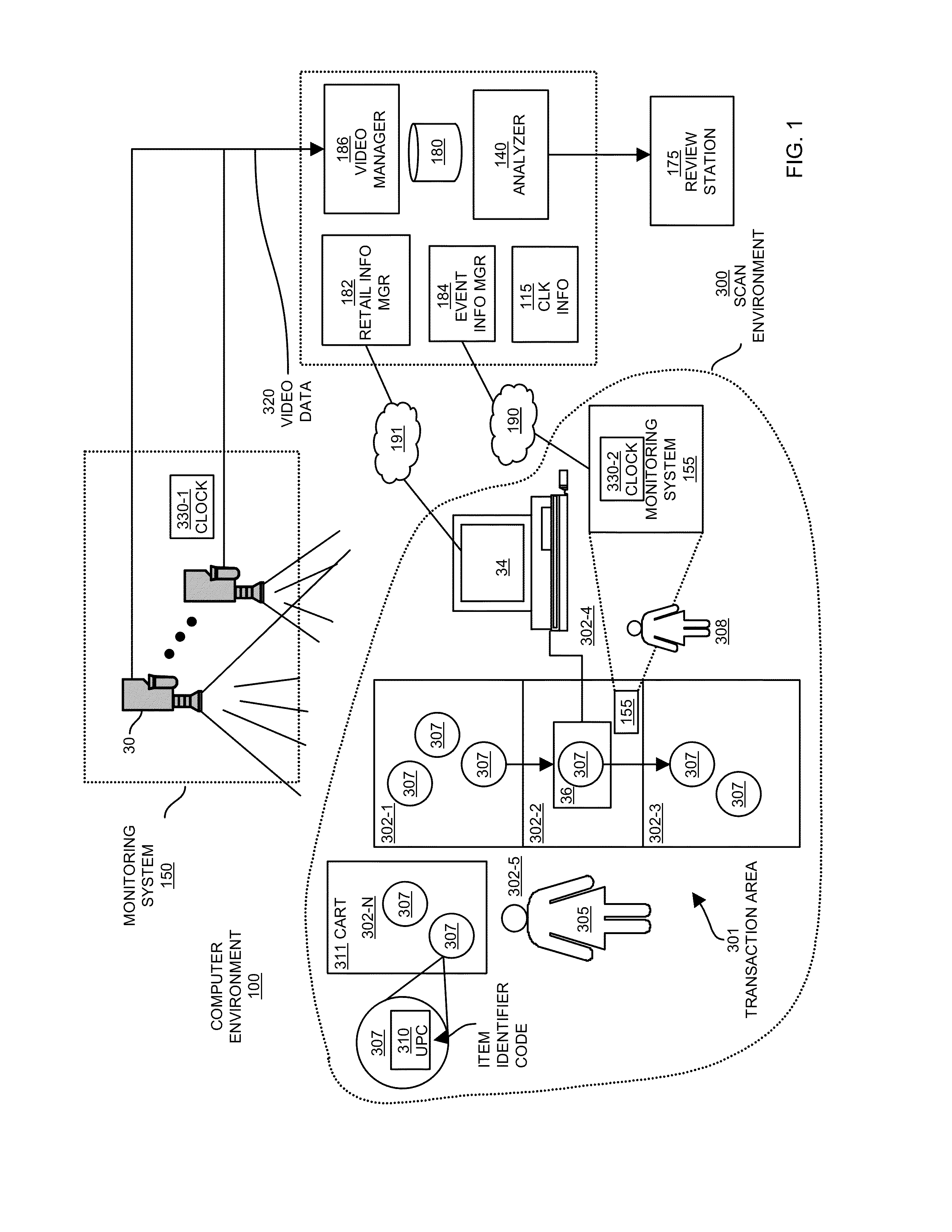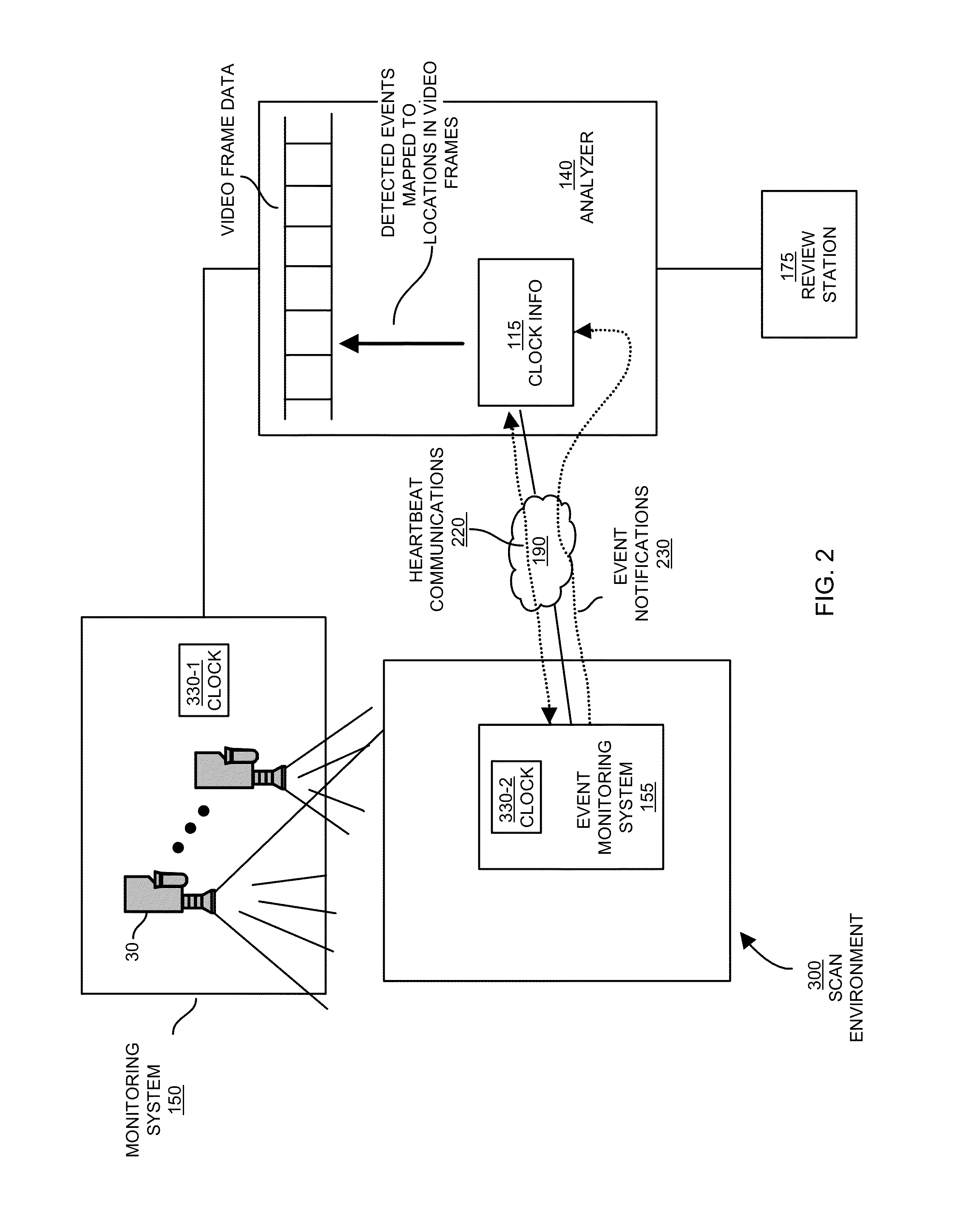These conventional systems that provide for purchase of items using an automated item identification systems such as a
scanner suffer from a variety of deficiencies.
In particular, operation of such systems can be compromised, either knowingly or unknowingly, by an operator in a manner that allows a customer to receive possession of one or more items without paying for them.
For example, such scanning systems are susceptible to “pass-throughs,” also know as “sweethearting” in which an operator purposefully or accidentally fails to scan an item as that item moves through the transaction area.
Retail chains lose millions of dollars a year to operator error or fraudulent activity of this nature.
In another fraudulent example known as
label switching, the operator causes the POS system to scan an item that is different that the item being passed through the scanning area during the transaction.
In such cases, a customer or operator may replace a UPC
label of an original and often expensive item with a UPC
label for another less expensive item.
The conventional scan-
gap detection method is widely regarded to be impractical, as scan-gaps have been found to be a “noisy” measure at best.
This is due to the fact that perfectly legitimate scan-gaps may vary widely due to delays such as those caused by weighing of produce, manual entry of unlabeled or un-scannable goods, and rescanning of items that did not get scanned on the
first pass.
As a result, scan-gaps are not a dependable metric for determining improper activity.
Thus, conventional systems that attempt to use scan gaps as a method for detecting fraudulent activity are prone to problems.
Discrepancies between the video data as captured by a security camera and the data from the registers may indicate that fraudulent activity may be taking place.
One of the challenges associated with correlating video data with a confirmation by the
scanner that the item was properly scanned is that the two independent sources generating this information need to be synchronized.
Such an option is impractical if not impossible in real world applications.
Given the difference in clocks, it is often difficult to manually correlate scan data from a register with video surveillance footage.
In other cases, the conventional
scanner may not even provide any indication whatsoever when an item was scanned during checkout.
However, it is often the case that the POS register will not send information in a timely manner across a network when a scan occurs.
In other words, there can be a substantial latency associated with a time of identifying that a scan takes place at scanner system and a time of sending a message over a network to indicate occurrence of the scan.
Accordingly, by itself, monitoring network traffic and time-
stamping detected events may not be useful.
Furthermore, even if a POS communicates across a network at the time of each scan, due to the closed nature of such a respective communication system, it may be difficult for a monitoring system to
decipher contents of the network messages and generate notification at an appropriate time.
Accordingly, in this last instance, it can be difficult to detect which data produced by a scanner of other device is useful for reporting of an event.
And, since there are many POS manufacturers in use today, this strategy could become prohibitively expensive.
As discussed above, reconciling item scan data with frames of corresponding video may be difficult or impossible since the system clocks associated with a point-of-sale transaction (or different nodes in a network) are typically not synchronized with system clocks of the
surveillance camera used to gather the video.
Because the clocks are not synchronized as discussed above, it is typically difficult for a reviewer to accurately map events associated with scanning of an item at a scanner to corresponding times or locations in the video.
 Login to View More
Login to View More  Login to View More
Login to View More 


